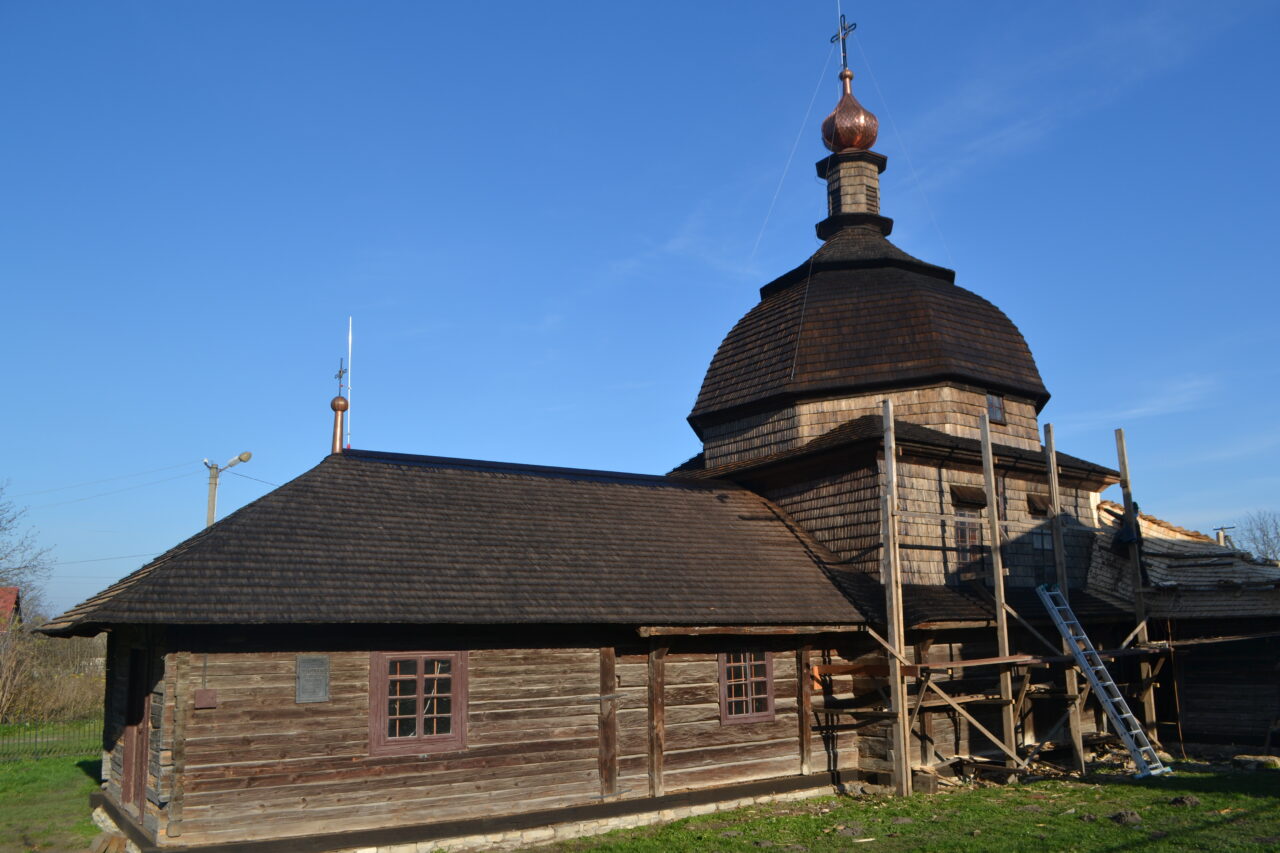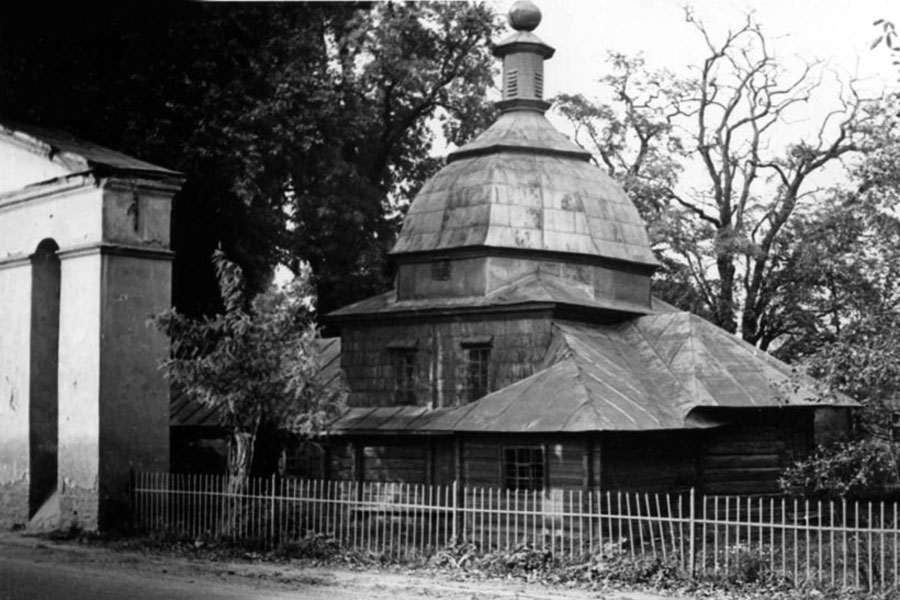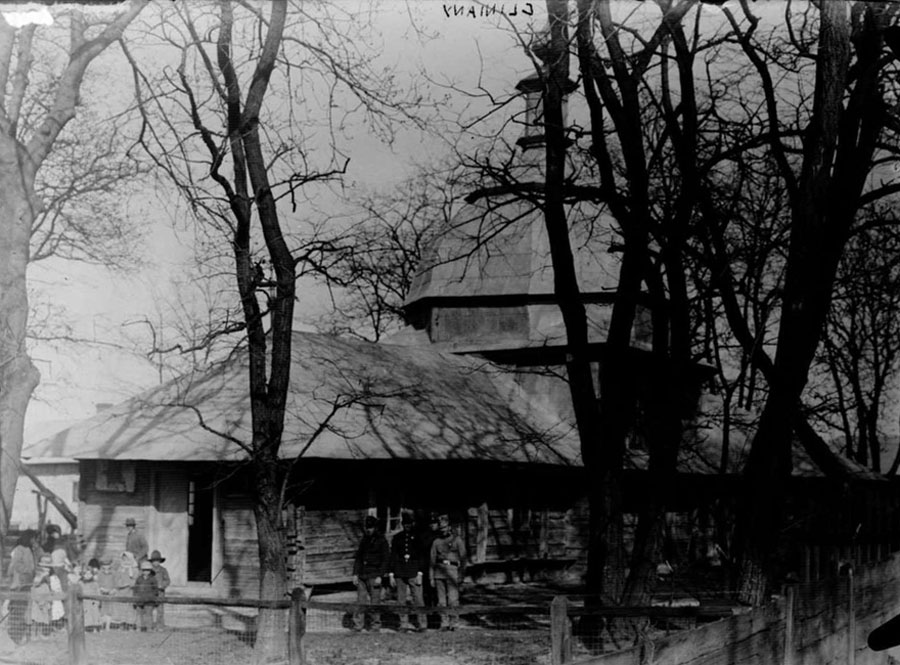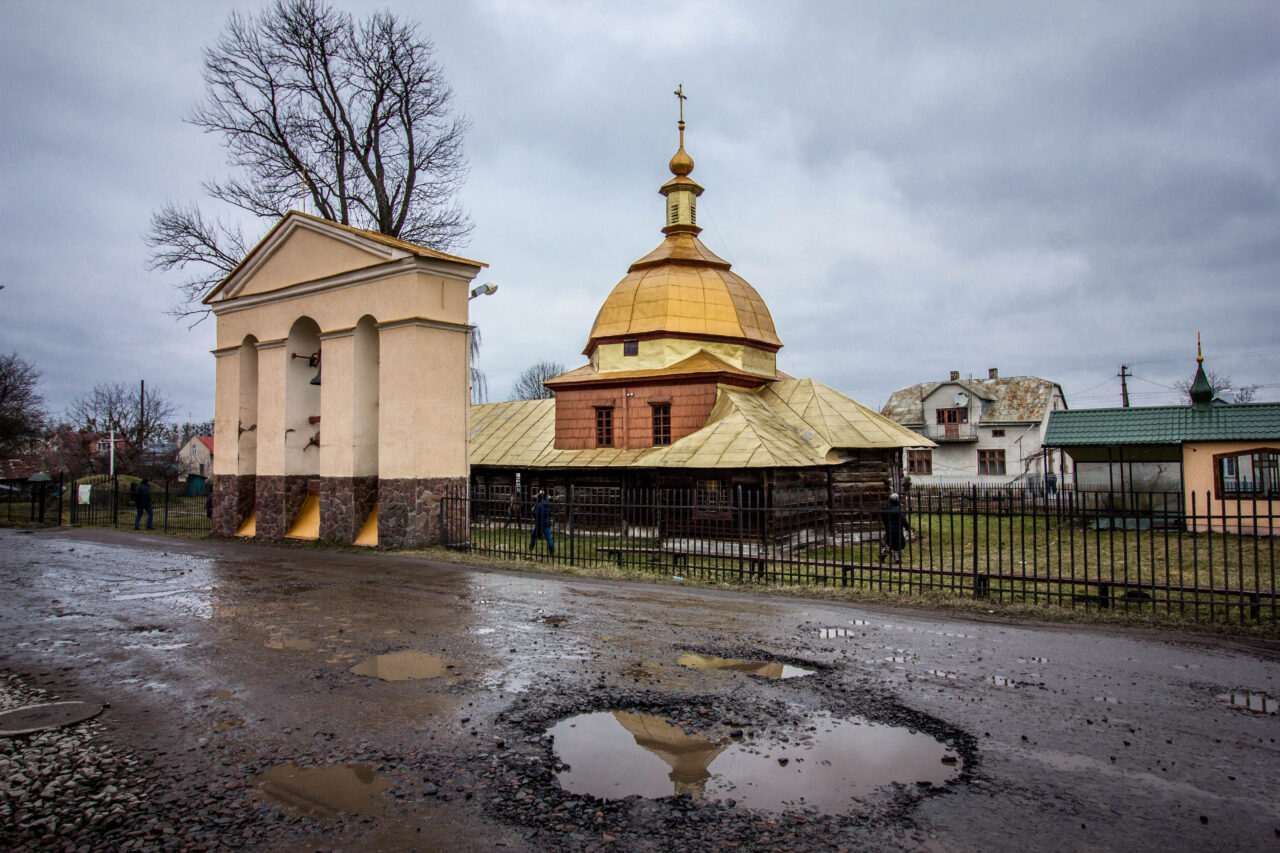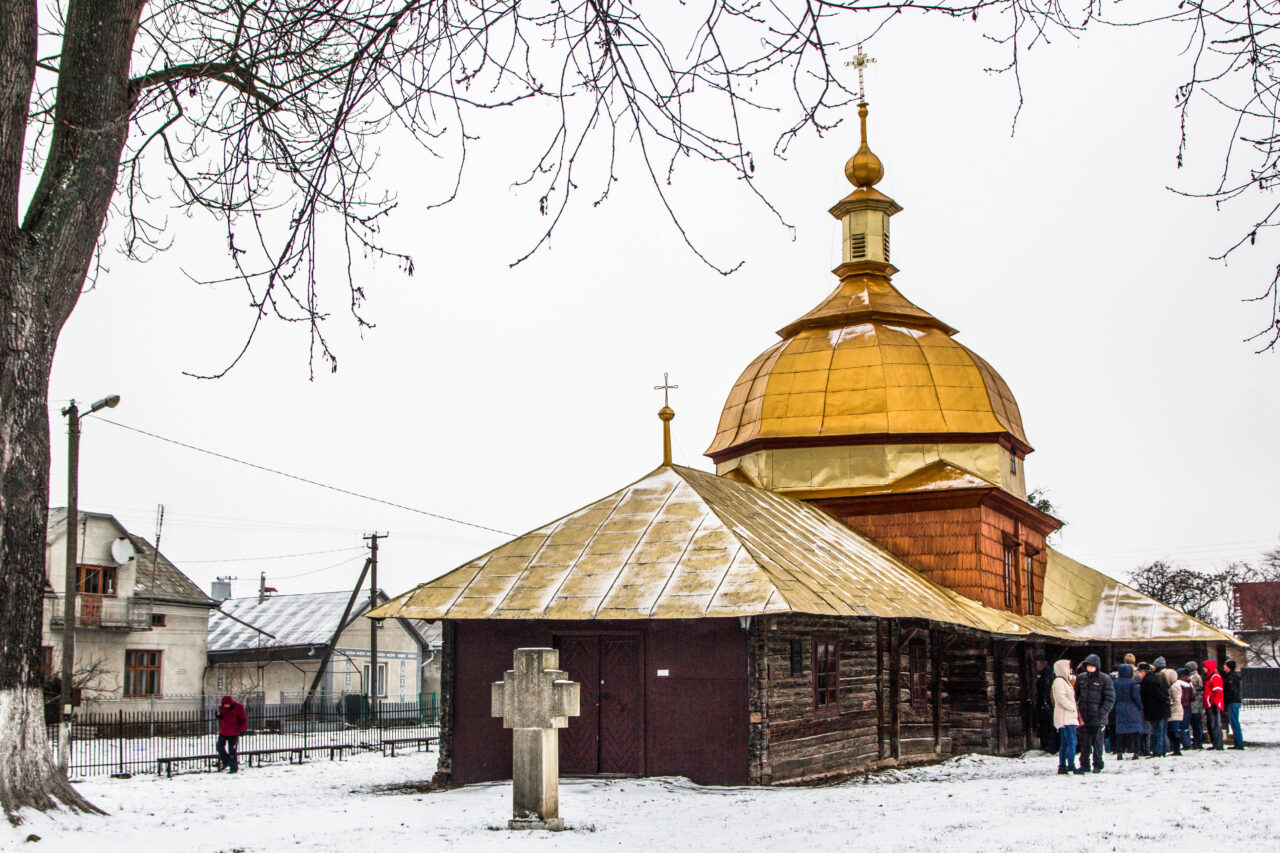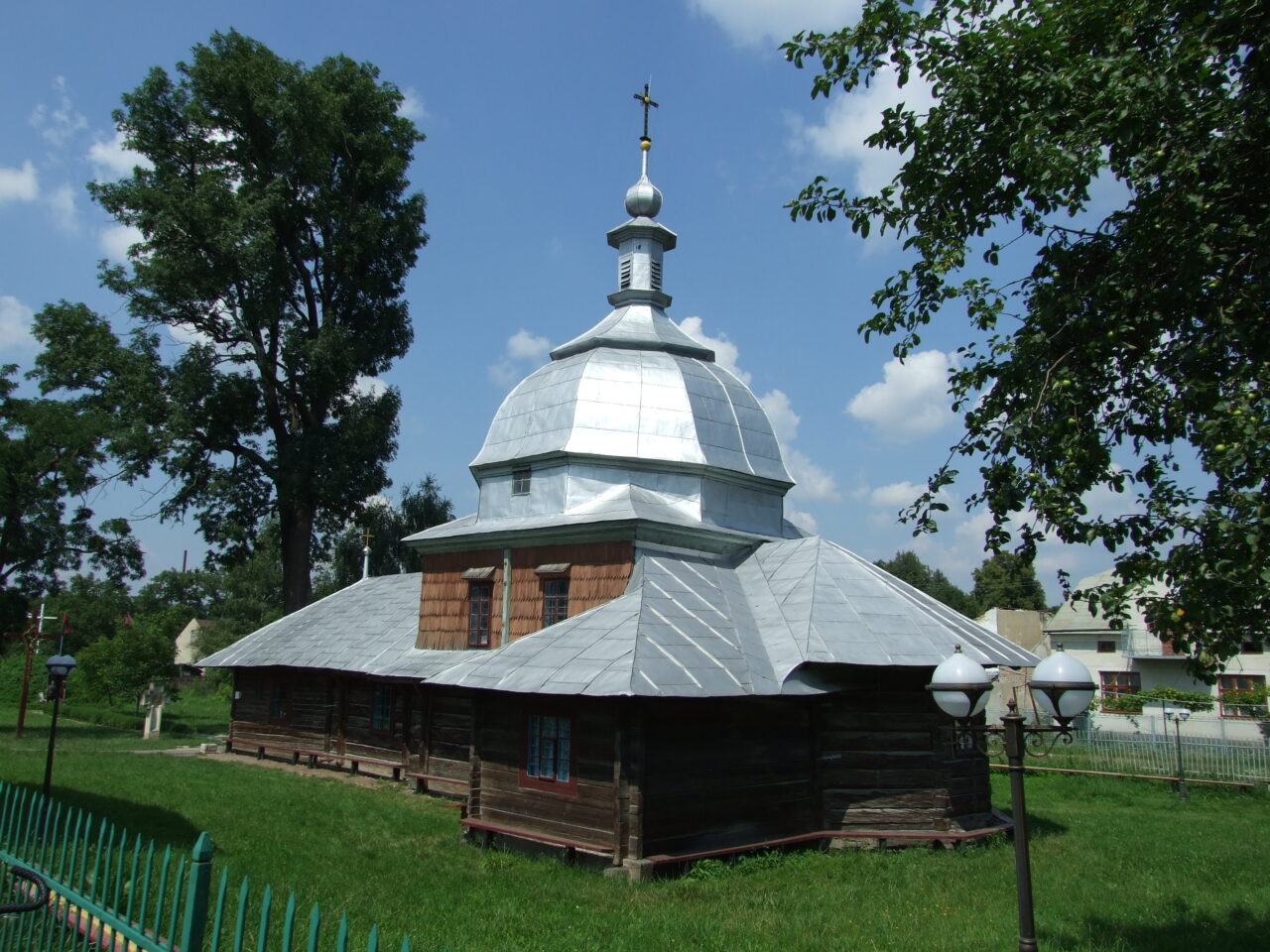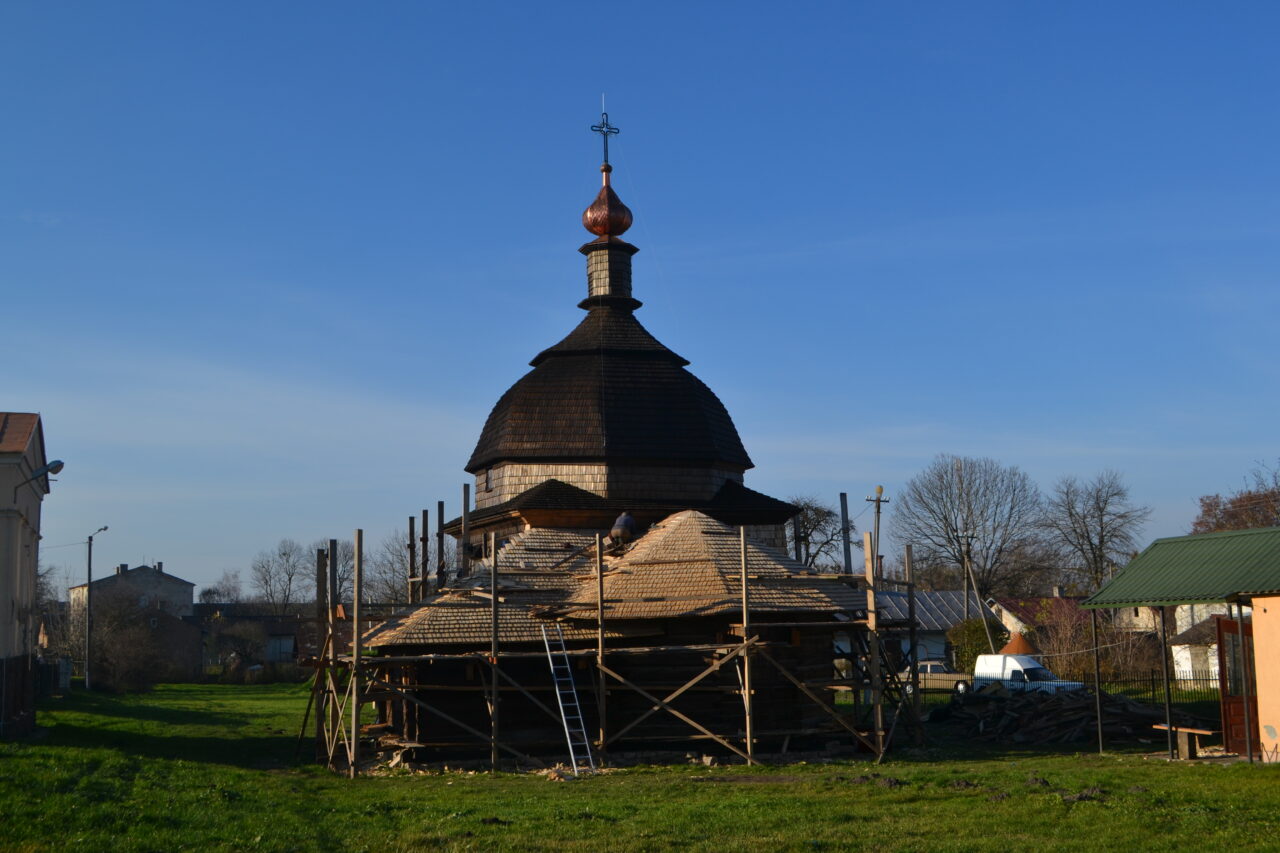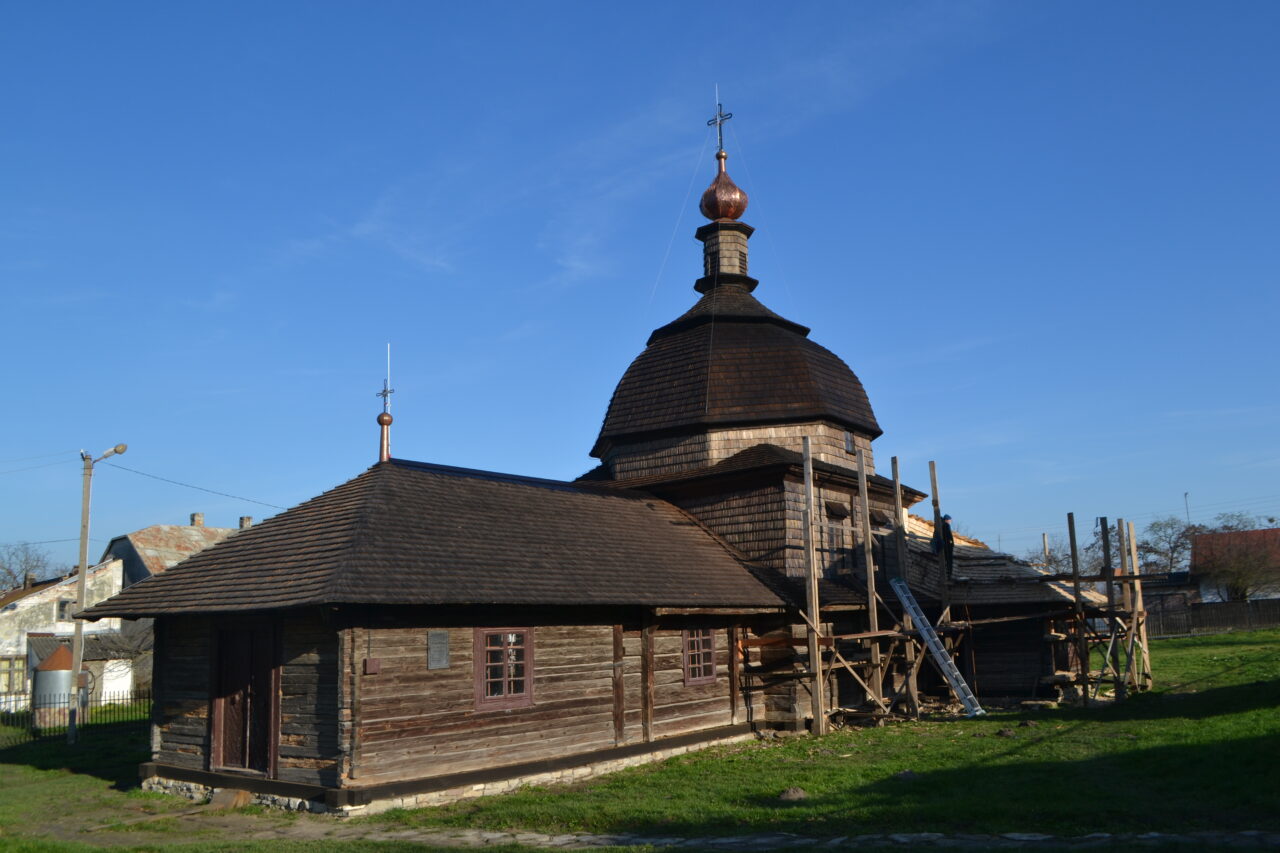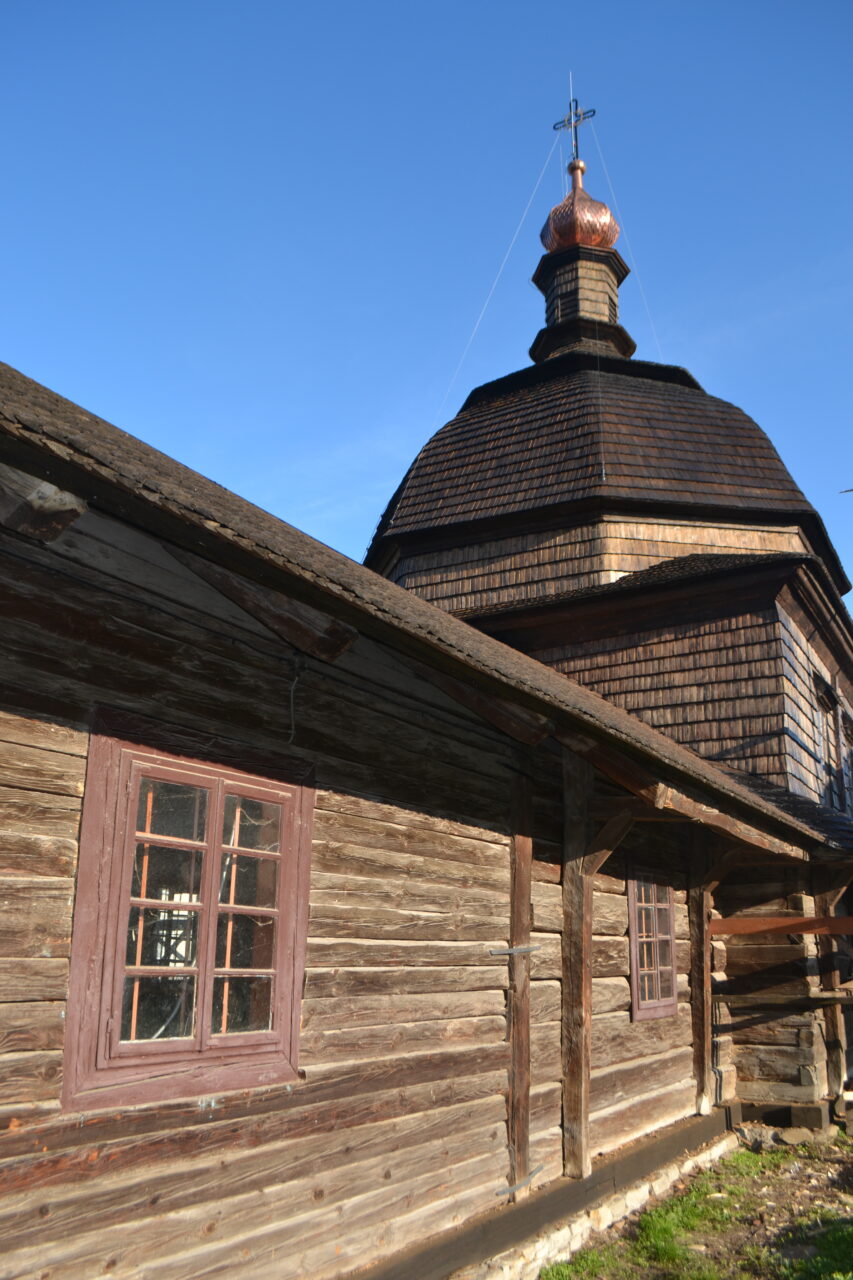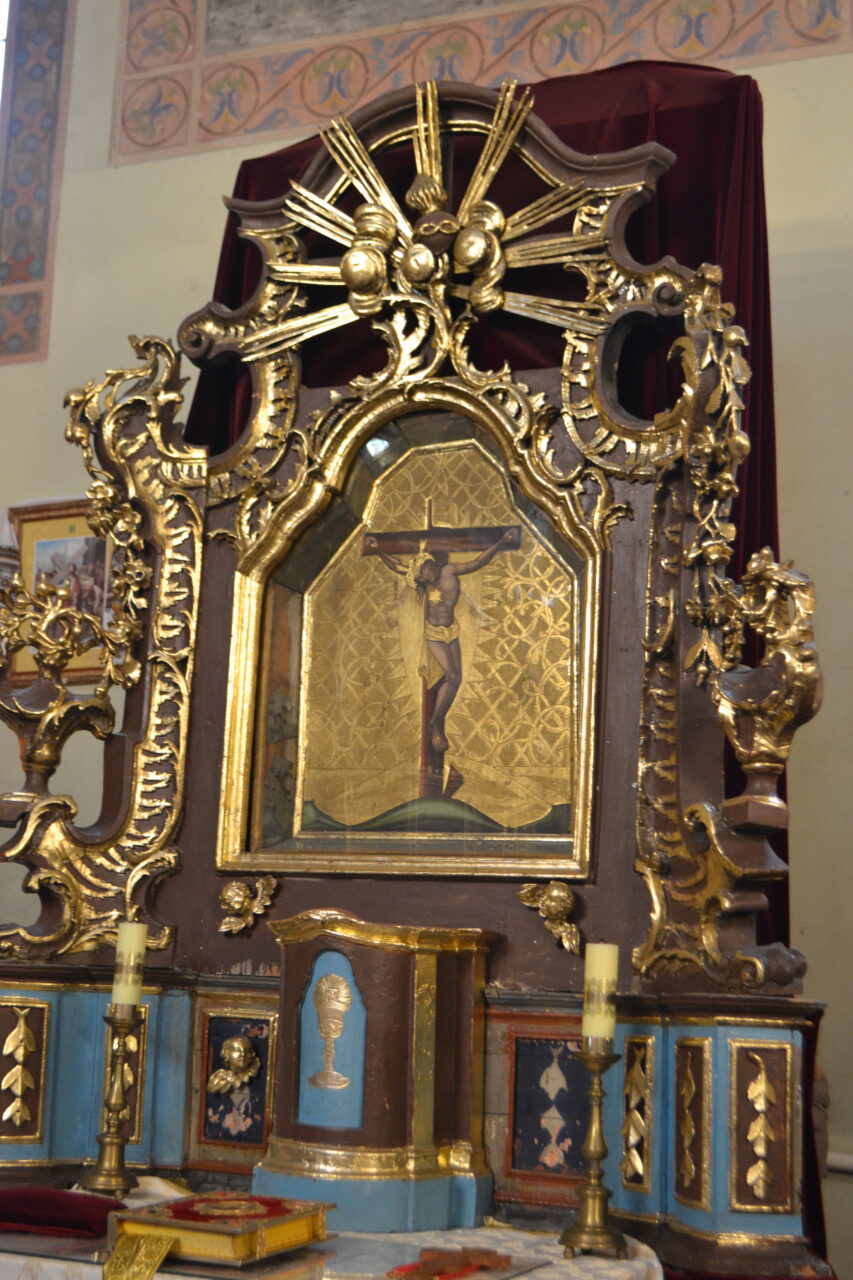In the English language there is a saying ‘in the middle of nowhere’. It is used to describe remote places, which are hard to reach. Hlyniany, an ancient town with the population of three thousand people in the former Zolochiv district, is just that. It quietly lives by itself away from interregional routes or at least a railway branch. It is 10 km from Krasne and all 41km to Lviv, so tourists are not frequent visitors here. And in vain!. There is something to see in Hlyniany.
However, there is no castle anymore. It stood here since 1603, when the region suffered from frequent Tatar raids. At that time, Hlyniany was just at the intersection of several trade routes, and hid behind a deep moat. It could hardly impress by the architecture. Although there is plenty of stone in this part of Galicia, it was built according to virtually Danylo Halytskyi’s traditions: from wood and earth. Maybe not as much earth as clay.
After all the name Hlyniany comes from hlyna – clay, and the local population is really attached namely to clay. Yes, there is stone, and the forests around Hlyniany were dense (that is there was as much wood as needed), but adorable adobe huts were loved here – such is the specificity of the place.
But the oldest surviving monument of the town was built of wood. The three-log and one-story church of the Assumption of the Blessed Virgin in Hlyniany looks like a strong, gnarled boletus mushroom from afar. The temple is one of the aqsaqals in Lviv region, the oldest part of the log house comes from – think about it! – Late 14th-early 15th centuries.
For more than 600 years the church has grown into the ground, shrunk from the years lived, and overgrown with a lot of legends. According to one of them, hetman Ivan Mazepa prayed in the temple. Another legend says that Bohdan Khmelnytskyi planted two old tall ash trees in the churchyard with his own hands. Probably he had time for the agricultural entertainment in the intervals between the campaigns in Lviv in 1648 and 1655. There is even not a legend, but a true story. It is said that in 1886, when the entire city burned to the ground in a great fire, the church remained intact. And it seems that there is an icon of the same age as the church.
Of course for so many centuries the temple was numerously rebuilt. The reconstruction of 1749 was especially serious. Another reconstruction took place in 1937. Since then there is a modest brick bell tower next to the Church of the Assumption.
With windows or without them the temple was turned into a warehouse. For some time there was a museum of carpet weaving (Hlyniany has been famous for its weavers). The only thing that inside reminded of the former aim of the building – the altar gilded image of the crucifix. This is a very old copy of an even older, miraculous image of the Crucified Jesus from the nearby town of Novyi Myliatyn. It was not removed, only hidden under a dark piece of cloth from the evil eyes. It was this icon that glorified the shrine in the interwar period. On Christmas Eve 1936, the darkened by the time image got self-restored, and even covered itself with gold leaf. Pilgrims from all over Galicia were coming to see the miracle. By the beginning of the Second World War, more than 3000 people were healed near this crucifix n Hlyniany.
It is said that people opened their temple secretly from the Soviet authorities and prayed in it even in stagnant years.
In 1989 the Church of the Assumption was returned to one of the city’s religious communities. In 2011 the church was cared for by local Greek Catholic parish, which is actively involved in the restoration of this incredible sacred and tourist architectural monument.

